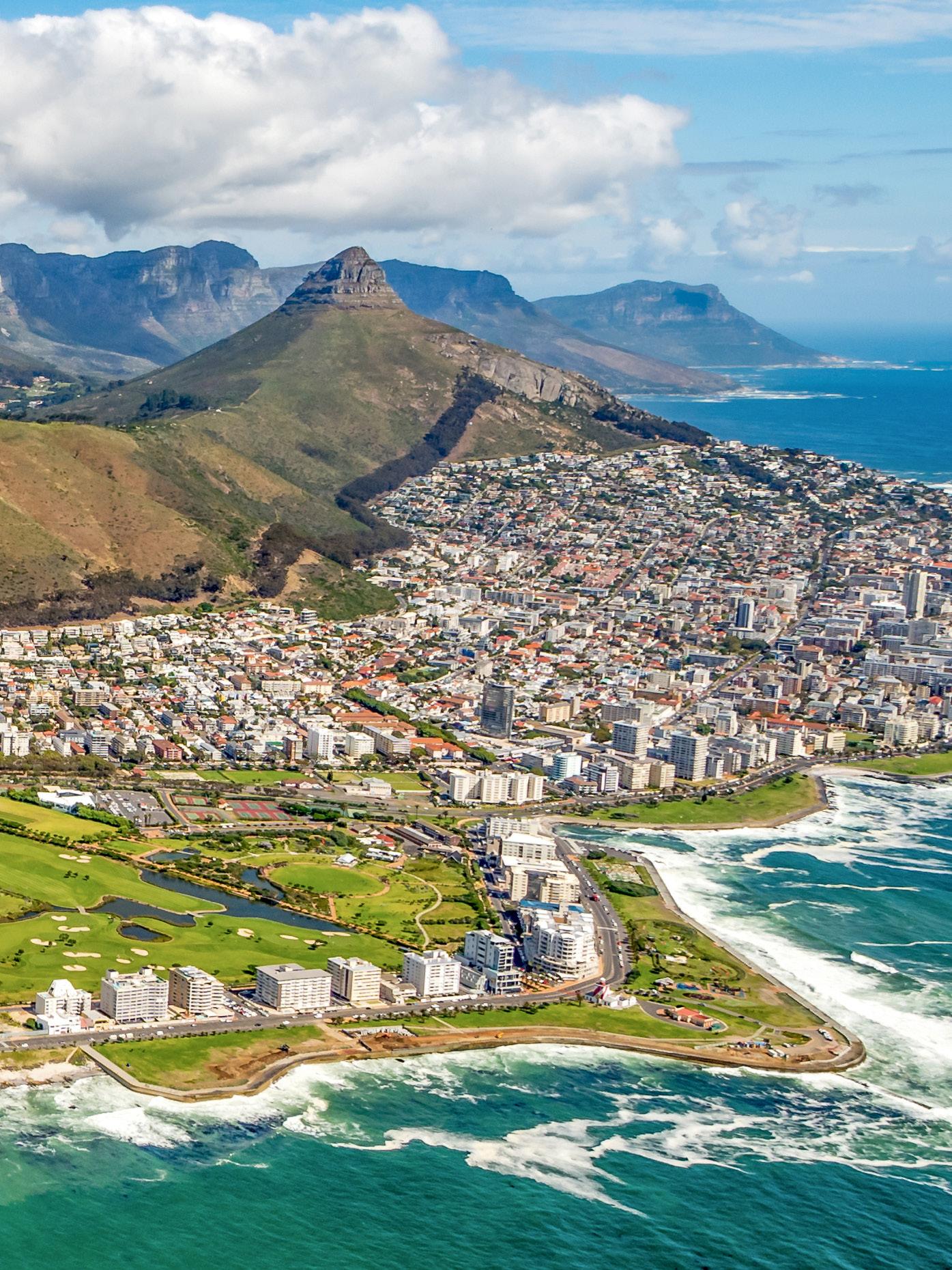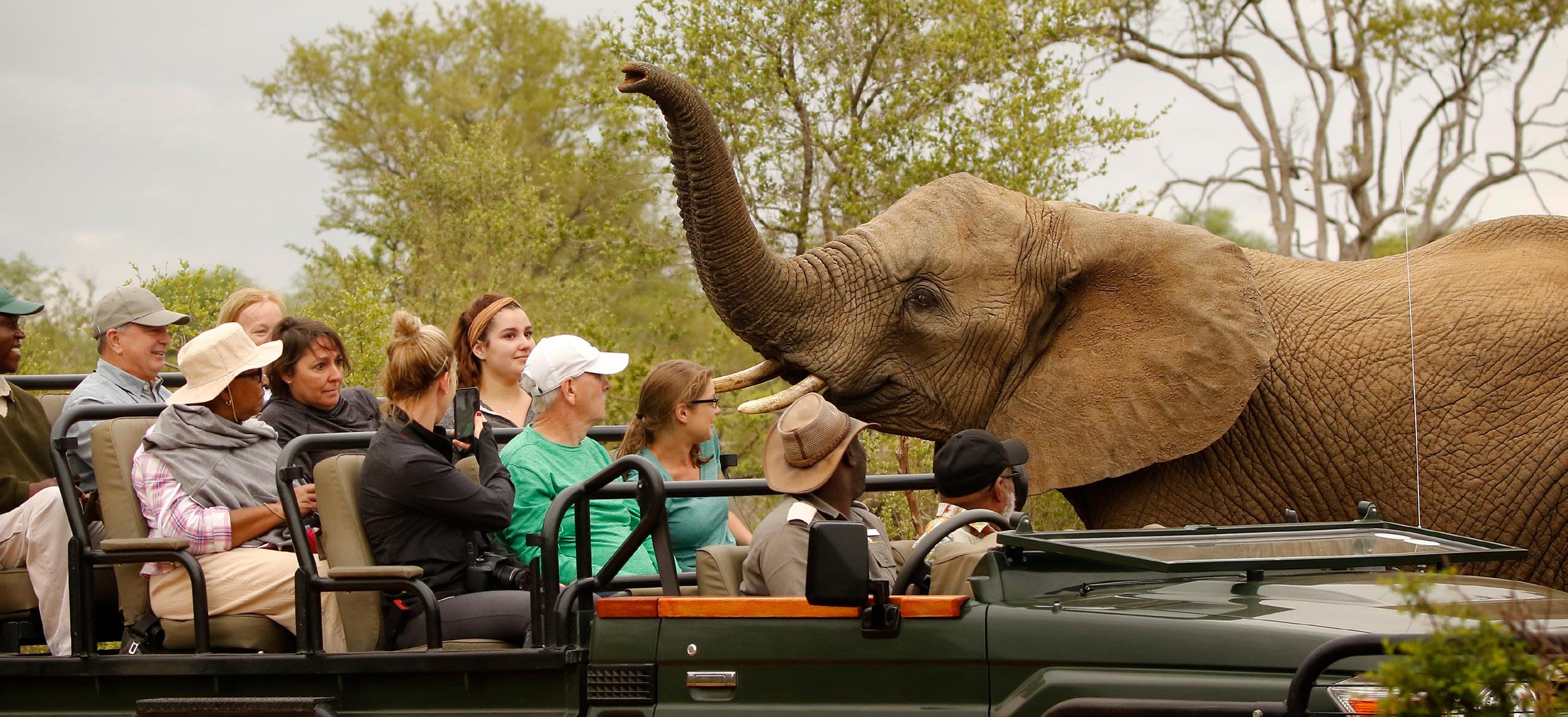
9 minute read
Tourism in South Africa
Highlighting An Attractive Investment Climate and Bankable Opportunities
By Shumirai Chimombe
South Africa As A Leading Tourism Destination
It is the second largest destination in Africa by international tourism receipts. In 2024, South Africa generated $6-billion, nearly 15% of Africa’s total tourism earnings.
It is the third destination in Africa. In 2024 SA received 9 billion visitors equivalent to 12% of the region’s total arrivals.
It is the fifth fastest growing destination in Africa. In Q1 2025 international tourist arrivals in SA grew by 6% vs the same quarter in 2024.
In 2024 the country recorded 47 million domestic tourism trips
Source: UN Tourism
“This Summit is about jobs, growth, and transformation. Tourism is labour intensive. Every investment here means jobs for young South Africans. Every Rand or Dollar invested is an opportunity created. And every partnership formed here will help us transform tourism into a driver of inclusive, sustainable prosperity.”Minister of Tourism, Patricia De Lille
Minister De Lille was giving the official opening address at the inaugural Tourism Investment Summit which was held in Cape Town from 9 to 10 September.
A G20 legacy project, the event brought together global leaders, policymakers, investors, and industry stakeholders to explore investment opportunities in South Africa’s tourism industry. According to UN Tourism the country welcomed nearly 9 million international visitors and 47 million domestic trips last year, contributing over 12% to national GDP.
“In July alone, South Africa welcomed over 880 000 visitors, which is a 26% increase compared to last year. Behind these numbers are livelihoods, families, and communities,” said the Minister. “But we cannot stop there. The ground is fertile for shovel-ready infrastructure projects.
“We stand here not only to showcase projects, but to invite partnerships. South Africa is a nation at work, and we are about action. Together, we can deliver a bold new chapter in tourism investment, for our country, for Africa, and for the world.”
A highlight at the Summit was the official launch of the Tourism Doing Business – Investing in South Africa guideline. Developed as a collaboration between the Department of Tourism and UN Tourism, this comprehensive guide provides investors with a practical roadmap, detailing opportunities, incentives, and key projects to drive sustainable tourism growth. The guide also highlights South Africa's unique blend of natural and cultural attractions supported by world-class infrastructure and a welcoming investment climate.
Why South Africa?
Executive Director of UN Tourism Natalia Bayona gave a presentation touching on the reasons to look to South Africa for investment.
Exceptional natural and cultural diversity - The country offers globally renowned wildlife experiences such as safaris with the Big 5. There are over 20 national parks and 10 UNESCO world heritage sites.
Strong regional and global demand - In 2024 76% of international tourist arrivals came from the African continent, alongside rising interest from long-haul markets such the USA, UK and Germany.
World class infrastructure and accessibility - The country boasts the best connected air network in Africa, extensive roadways and modern cruise terminals, ensuring ease of access.
Support and pro-business investment environment - South Africa offers incentives like Special Economic Zones (SEZ), the Green Tourism Incentive programme, and co-investment models for tourism ventures.
Leadership in innovation and sustainable tourism - Leads the continent in tourism tech venture capital funding and is advancing green mobility, renewable integration and circular economy practices in its tourism offerings.
Economic Outlook, Investment Climate and Incentives
South Africa’s stable macroeconomic framework, improving investor climate, and strong financial sector position it as a leading tourism investment hub. Its special economic zones (SEZs) framework is a key component of South Africa’s industrial policy - with 15% corporate tax, VAT exemptions and infrastructure and institutional support. Natalia highlighted that UN Tourism has been actively promoting and encouraging the development of SEZs around the world because these have been key to developing the different regions.
With regard to tourism investment, between 2014 and April 2025 South Africa’s tourism sector attracted 34 projects, reaching $348-million in foreign direct investment (FDI), with the top investors being France, Botswana, UK, USA, India and Germany. The investment focus areas were urban tourism, hospitality, air transport, eco tourism and cultural tourism, with 60% of the capital invested being focused on accommodation.
A core reason behind South Africa being a major tourism destination is that the sector is bolstered by government-driven initiatives to enhance infrastructure, connectivity, and investment opportunities.
During the 2015/16 financial year the Department of Tourism established the Tourist Incentive Programme (TIP) aimed at stimulating growth and development in the sector by providing financial assistance to privately owned tourism enterprises. The five programmes that are currently being funded by TIP are Green Tourism Incentive Programme ; Market Access Support Programme; Tourism Grading Support Programme; Tourism Transformation Fund and the Tourism Equity Fund.
Spotlighting Current Investment Opportunities Ready For Take-off
During the Summit, eight bankable tourism projects were unveiled with an investment portfolio of $65-million (R1-billion) and the potential to create 1 500 jobs. These projects are tangible opportunities for investors in ecotourism, hospitality infrastructure, cultural heritage tourism, and green innovation. Minister De Lille indicated that while public-private partnerships (PPPs) are one option, the amendments introduced by the treasury allow investors to innovate other financing models.
As of 1 June 2025, the Amended National Treasury Regulation 16 for Public-Private Partnerships came into effect, allowing for new models to be embraced - from Design-BuildOperate partnerships to blended finance and even crowdfunding.
She said that the eight projects are from both the public and private sectors, with strong return on investment and high community impact. “And this is just a fraction of what lies in our national pipeline, which is rich, diverse, and growing. We stand here not only as a nation of immense tourism potential, but also as a gateway to Africa,” The developments on offer are:
Hole in the Wall Resort, Coffee Bay (Eastern Cape)
Project owners: Incopho Coastal Developments
A greenfield development at the iconic Hole in the Wall just off the Wild Coast - a huge detached cliff that has a giant opening carved through its centre by the waves. The development will include a 4-star hotel with 100 rooms, day visitor facilities, which include indoor dining facilities, bar area, boma and swimming pool, and a 500-seater conference facility. Other facilities include a restaurant, lounge, health spa, and a fitness centre.
Type of investment: Equity and debt partnership. Investment required 40% of the project cost which is R 141,5-million ($7.9-million)
Water World Fun Park, East London (Eastern Cape)
Project owners: Buffalo City Metropolitan Development Agency
A family amusement park with water slides, interactive water features and playgrounds. The investment will be for the refurbishment of existing structures, restoring incomplete works, upgrading infrastructure and ensuring the facility meets quality, safety, and operational standards. Investment type: Commercial public-private partnership (PPP), equity and debt partnership.
Investment required: 41% of project cost equivalent to R 80-million ($ 4.2-million)
Tokai Manor Table Mountain National Park, Cape Town (Western Cape)
Project owners: South African National Parks (SANParks)
Built in 1796 the beautiful and historic Tokai Manor House is an important heritage site located just below Elephant’s Eye, in the Tokai Forest in Cape Town.,
This is a concession opportunity for the refurbishment and operation of this facility. It has the potential to serve as a multi-use eco-tourism facility with related tourism activities.
Investment type: Commercial PPP, Equity and Debt Partnership. Investment required: R69-million ($ 3.9-million)
Groote Schuur Estate Tea Room and Restaurant, Cape Town (Western Cape)
Project owners: South African National Parks (SANParks)
A prominent feature in the history of Cape Town, this carefully preserved presidential residence was furnished and decorated by Cecil John Rhodes and is located within the northern section of Table Mountain National Park, A concession opportunity for the refurbishment, construction of new assets, and upgrading existing assets, and operation of this historical and cultural facility. The opportunity includes operating a restaurant, function venue, curio retail shop, and related tourism activities.
Investment type: Commercial PPP, Equity and Debt Partnership, and Equity Investment required: R20-million ($ 1.1-million)
Eye of Menlyn, Pretoria (Gauteng)
Project owners: SA Corp Group
The project owners intend to establish and operate an observation wheel at Menlyn Park. It will consist of 30 luxury and climate controlled cabins, each with a carrying capacity of 8-10 people. The Wheel will offer experiences such as cabin trips, digital photo booths and special events booking, including conferences and meetings. A minimum of two cabins will be designated VIP, with exclusive amenities and luxury champagne experiences. Investment type: Debt/ Equity Partnership. Investment required: R25-million ($1.4-million)
God's Window Skywalk (Mpumalanga)
Project owners: Motsamayi Tourism Group
God’s Window, located along the Panorama Route in the eastern Mpumalanga province, has this name because of its breathtaking views of the Lowveld stretching across lush valleys, towering cliffs and distant horizons. The development will consist of a cantilevered glass suspended over the edge of a cliff, protruding about 12 metres outward. The skywalk will offer visitors a panoramic view of the Lowveld with a drop of more than 900m down into the local indigenous forest-clad ravine. Investment type: Commercial PPP, equity and debt partnership
Investment required: 40% of project cost - R200 million ($ 10.4 million)
Orpen Kruger Lodge (Mpumalanga)
Project owners: MontDor Clarens
The lodge is a resort with chalets just outside the Orpen Gate of the Kruger National Park, next to Manyeleti Game Reserve. It is renowned for its good wildlife sightings and open-air bush boma dinners and uniquely offers classic Big 5 safaris. The project involves expanding the resort to include 10 additional chalets and a 144-room hotel.
Investment type: Debt/Equity Partnership
Investment required: 40% of project cost – R 38 million ($ 2.1 million)
Skukuza Rest Camp, (Kruger National Park)
Project owners: SANParks
Skukuza Rest Camp is located in southern Kruger National Park on the banks of the Sabie River. It is the biggest camp and includes facilities such as a shop, deli, ATM, restaurant, swimming pools, car hire, car wash, fuel station, picnic area and other facilities. The project will consist of upgrading the camp’s 36 rondavels, 6 family cottages, and Nyathi Guest House.
Investment type: Commercial PPP, equity and debt partnership
Investment required: R90-million
The Tourism Doing Business –Investing in South Africa guideline which contains more information on these investment opportunities can be found the Department of Tourism’s website.

Sources: Tourism Investment Summit (TIS) | Department of Tourism | South African Tourism | UN Tourism | TourismRSA

